Charity dedicated to the fight
against childhood cancer
against childhood cancer
The work of the INSERM team co-directed by Dr Marie Castets (CR1 Inserm, HDR) and Dr Jean-Yves Blay (PUPH, HDR) focuses on cell death and cancers. Thanks to the support of Eva pour la Vie (55,000 euros) and other associations, this team is currently developing these lines of research on rhabdomyosarcomas, osteosarcomas and neuroblastomas ...
"Nearly 500 children in France and 80,000 around the world die each year from cancer. 50 years ago, less than 25% were cured. The situation has greatly improved with the advent of chemotherapy, initially developed. for adults but benefited children. It is estimated that 3 in 4 children are currently recovering. Yet one in 4 children will not recover and this situation has not improved much since the early 2000s. current treatments remain aggressive and are the cause of more or less disabling sequelae in a large number of children.
The duty of a pediatric oncologist is to provide care while preserving the quality of life as much as possible. It is therefore urgent to understand the specificities of childhood and adolescent cancers, and to identify their molecular causes in order to imagine new treatments, more effective and less aggressive for developing organisms.
Our current research project falls within this perspective and aims to understand the mechanisms behind the resistance of tumor cells to death. Indeed, when a cell becomes abnormal, localizes outside its tissue or is in excess, it is normally eliminated by the activation of signals leading to its own death. The ability to resist the onset of this suicide is one of the characteristics acquired by tumor cells. In addition, blocking these cell death programs is implicated in resistance to treatment.
In order to improve the medical management of cancers in children, our project aims to identify the anomalies at the origin of these mechanisms of resistance to cell death and to develop new compounds that could be used as drugs. to restore it.
Our strategy is based on 2 main axes:
1) carrying out so-called large-scale studies to establish a mapping of blocking points in cell death, in particular in response to treatments;
2) the characterization of the role of the abnormalities identified in the transformation of normal cells into tumor cells and their definition as new therapeutic targets, thanks to analyzes on different cellular models, in particular three-dimensional.
Thanks to the support of Eva pour la Vie and other associations, we are currently developing these lines of research on rhabdomyosarcomas, osteosarcomas and neuroblastomas. The dynamic and exhaustive mapping of cell death pathways is in progress for these 3 cancers. Two candidate genes are being studied in rhabdomyosarcoma, in order to define whether they actually constitute activatable molecular levers to restore cell death in these tumors, and thus imagine new therapeutic avenues. "
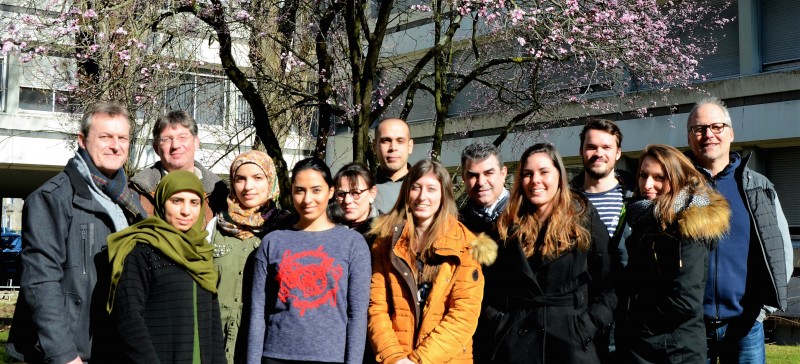
From these initial results and following the arrival of three researchers in the team, new projects have emerged and are carried out in collaboration with bioinformaticians, chemists and French and foreign clinicians. One of these projects aims (i) to study the role of a protein, which modifies the DNA of cells and participates in the formation of the most serious tumors, and (ii) to test the effectiveness of several inhibitors of this protein, knowing that some of these inhibitors are already used clinically in the treatment of adult cancers. A second project aims to study the mechanisms of energy production by hepatoblastoma cells, to find their weak point and then to block this source of energy in order to prevent the development of tumor cells. All of this work aims to study the molecular content of the most dangerous hepatoblastomas in order to find innovative therapeutic solutions to effectively treat children with these cancers.
In a second work, the team studied the molecular content of 25 hepatoblastoma tumors by RNA sequencing. Bioinformatics and microscopic analyzes of tumor tissues have shown the interest of the four genes HSD17B6, ITGA6, TOP2A and VIM in classifying hepatoblastomas into three different groups. In the most aggressive group called “C2A”, we have shown that the “Fanconi anemia” molecular pathway plays a very important oncogenic role and allows tumor cells to resist chemotherapy. Using an inhibitor of this pathway, we were able to stop the growth of C2A hepatoblastoma cells, destroy them and inhibit the development of hepatoblastoma in mice. These results show that this treatment, already used in the treatment of certain leukaemias in adults and children, could be used to treat children with aggressive hepatoblastoma type C2A. All of these results are summarized in the scientific magazine Hepatology .
In a third work published in the journal Oncotarget , we describe in more detail the interest of the hepatoblastoma model implemented in the chick embryo and its usefulness for testing therapeutic molecules. Our results show that in chickens, Huh6 hepatoblastoma cells form tumors quite similar to those developing in patients. This model is therefore very useful for researchers because it identically reproduces the stages of formation of a hepatoblastoma and makes it possible to easily study this cancer in the laboratory. The team also analyzed by RNA sequencing the molecular content of these tumors during their formation in chickens and identified several genes that could play an important oncogenic role. We therefore plan to study them. In conclusion, this new model will allow us to test different types of anticancer molecules and to better understand how a hepatoblastoma develops, with the key to new treatment possibilities.
Read the interview on CARENEWS (September 2018)
December 2020 Update - New Research on DIPGs (Brainstem Tumors)
Thanks to the support of Eva Pour la Vie, Pour Emma, Scott & Co and Grandir Sans Cancer, a new project will start in January 2021 within the INSERM-MIRCADE team in Bordeaux. The goal of this project is to identify new drugs capable of killing DIPG cells from a catalog of more than 900 molecules. In order to accelerate the transfer of these results to patients and facilitate the opening of new clinical trials, the anti-cancer molecules tested will either already be available in the hospital (drugs with Marketing Authorization), or in progress. evaluation (clinical trials) in the treatment of cancer in adults or children. After selecting the most promising molecules, the team will study the ability of the most effective drugs to kill DIPG cells using two DIPG tumor models in chick embryos and in mice (models put in place in the team by Dr Martin Hagedorn). The second objective of this work is to study the effect of the most efficient molecules on the behavior of DIPG cells using cellular, molecular and high resolution microscopy imaging approaches. Indeed, knowing today how these molecules act is to prepare the development of tomorrow's drugs. By choosing to test these anticancer drugs, we hope to find new therapeutic solutions to treat children with brainstem tumors.
This completely new project calls on the skills and know-how of the MIRCADE team in the GITC study (see recent publication in the journal Neuro-Oncology ) and in the search for the most effective compounds among a library of several hundred of candidates (see the 2017 publication on Childhood Liver Cancer ). This work will be carried out by Guillaume Herrault, Master 2 student at the University of Poitiers, and Farah Rahal, doctoral student in the team, under the joint supervision of Drs Christophe Grosset and Martin Hagedorn.
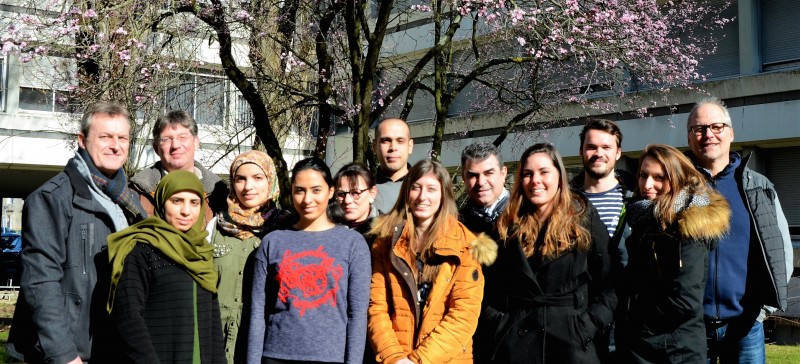
Since September 2014, Dr Martin Hagedorn has been leading a team of researchers (Caroline CAPDEVIELLE , Farah RAHAL, Justine CHARPENTIER and Mélissa MENARD) which devotes its research work to the identification of new therapeutic targets in brainstem tumors and to the improvement of its treatment methods. Work recognized by several European scientific teams & experts.
First of all, the team developed a new tumor model of DIPG in the chick embryo that makes it possible to test different anticancer drugs on the growth of tumor cells and obtain the result in a few days. It also makes it possible to evaluate the oncogenic role of certain genes in these tumors, including a very promising gene discovered by the team.
One of the promising drugs in the treatment of brainstem tumors, Panobinostat has been tested in clinical trials to assess its effectiveness in patients. Dr. Hagedorn's lab has identified two proteins whose expression increases sharply when DIPG cells are treated with Panobinostat. One of these two proteins plays an important role in the proliferation of DIPG cells and their ability to invade normal brain tissue. It is therefore likely that DIPG cells produce these two proteins to escape the harmful action of panobinostat. A major publication was written by the team and published by the world reference journal " Neuro-oncology ".
In addition, the project led by Farah Rahal under the leadership of Dr Martin Hagedorn aims to improve the treatment of children with brainstem tumors. These tumors, which are resistant to current chemotherapy regimens, generally have genome abnormalities called "epigenetic changes". The presence of these abnormalities makes brainstem tumor cells potentially sensitive to certain drugs capable of targeting these epigenetic alterations. One of these drugs targets the EZH2 protein which is heavily produced by brainstem glioma cells. The laboratory has shown that blocking the EZH2 protein by this drug leads to a decrease in the proliferation and migration of tumor cells and leads to their final elimination.
The team is testing a new chemotherapy approach which consists of "enclosing" the active anti-EZH2 molecule in a chemical envelope which will then be transported in inert form by the bloodstream to the tumor where it will be specifically released and eliminate the cells. tumors without affecting the normal tissues lining the blood vessels, in order to limit their toxicity and increase their effectiveness.
"We wish to thank the Eva Association for Life, the Groupama Health Foundation, the other parent associations and all the donors for making this project come true. We hope the results of our work will benefit children with this cancer. "
Publication (November 2019)
HDAC inhibition induces expression of scaffolding proteins critical for tumor progression in pediatric glioma: focus on EBP50 and IRSp53
https://www.ncbi.nlm.nih.gov/pubmed/31711240
https://doi.org/10.1093/neuonc/noz215
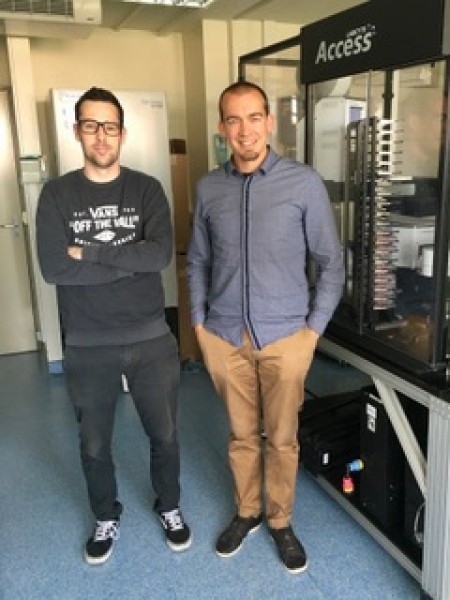
Dr Pasquier's research work mainly focuses on the repositioning of drugs which consists of testing, in new therapeutic indications, drugs already approved by the health authorities. The aim of this work is to identify new therapeutic targets for the most difficult to treat cancers and thus improve the care of patients suffering from these aggressive forms and refractory to treatment . In particular, pediatric cancers (neuroblastoma), brain tumors affecting children as well as adults (glioblastoma, medulloblastoma) as well as certain rare forms of cancer (angiosarcoma).
Why did you choose to focus your research on childhood cancer?
This is a huge question that I have had the opportunity to think about a lot in recent years because it comes up often. I tend to think that it was the circumstances of life that led me to pediatric oncology research, and it is the passion that keeps me from doing anything else in my life now. When I was 12, I suffered from quite severe facial paralysis and had to be hospitalized in a pediatric oncology department because there was a suspicion of a brain tumor. Looking back over the years, I think that this experience left a deep mark on me and when I left the hospital, safe and sound, I probably had a form of "survivor syndrome" which pushed me, unconsciously, towards this professional path. In addition, I had certain learning facilities and I took great pleasure in studying. It is therefore naturally that I headed for long studies. And finally, when I was a Master 2 student, I had the chance to be supervised by 2 exceptional young researchers, Dr Manon Carré and Dr Nicolas André, who both transmitted to me their passion for pediatric oncology.
Can you tell us about the team that works with you?
The research team to which I belong (Structural Biology and Integrated Chemistry-Biology) within the Marseille Cancer Research Center aims to identify new therapeutic targets by focusing on protein-protein interactions. Within this team, I lead a small group that focuses on drug repositioning. This group is made up of a thesis student, pharmacy intern Jérémy Ariey-Bonnet, who works mainly on glioblastoma (an incurable brain tumor) and a Master 2 student, Rébecca Aim, whose research project is focused on acute myeloid leukemia. My short-term objective is to recruit staff (students, engineers and post-docs) in order to be able to further develop my research projects in pediatric oncology. In addition, I work very closely with the nursing teams of the Hematology and Pediatric Oncology department of the Hôpital de la Timone, and in particular Prof. Nicolas André, with whom I design most of my research projects in order to facilitate the transfer to the clinic and thus guarantee the real-world application of our laboratory research.
Concretely, what is the use of the money entrusted by the association Eva pour la vie? Is this an important help for you, for your project?
The financial support that I receive from the Eva pour la vie association is absolutely vital to my research activity. It is very simple. Without this support, my research projects on childhood cancer would simply be on standby for lack of funding (despite more than 10 funding requests submitted each year). The money entrusted to me will allow me to pay for the consumables necessary to carry out the experiments essential for transferring our results to the clinic. We have in fact identified several drugs, used in clinics for applications as varied as arterial hypertension, parasitic infections or certain psychiatric disorders, which were able to increase the effectiveness of standard treatments against certain forms of cancer of the prostate. 'child. We must now validate these results in order to be able to set up clinical trials. It's at this crucial stage that Eva's Lifetime Support comes in.
The EPLV association is at the initiative of a process aimed at obtaining from the State a law guaranteeing a fund dedicated to research on cancers and incurable diseases of the child, as well as an improvement of aid to families. She is also co-founder of the Federation Grandir sans Cancer, at the origin of a manifesto that you have co-signed. What do you think of these initiatives?
I fully support the efforts of EPLV and the Federation Grandir sans Cancer because I believe that they are absolutely essential. It is very sad to say but the fact is that one of the main drivers of medical research remains the prospect of financial profits for the pharmaceutical industry and the biotechnology companies. Not many people know this, but private companies fund the vast majority of clinical trials around the world. When working on drugs that are no longer patented, for applications in pediatric oncology (and therefore a very small potential economic market compared to adult cancers such as breast, prostate or lung cancers) , it becomes extremely complicated to obtain financing. And setting up clinical trials becomes an even greater challenge. It is therefore the role of the State to replace private companies and guarantee targeted funding for research that may have an impact on public health, but which has little prospect of immediate financial benefits.
November 2019
The support provided by the Eva pour la vie association has enabled Eddy Pasquier's team to undertake 2 complementary approaches to identify the molecular targets of two classes of drugs with promising anti-cancer properties: beta-blockers and antihelminthics. from the class of benzimidazoles. The first approach, called in silico, is based on the use of a predictive algorithm while the second is based on the use of click chemistry. Their mass spectrometry analyzes have made it possible to identify several new therapeutic targets in gliomas and neuroblastoma. The results open important perspectives not only for the characterization of the anti-cancer mechanisms of action of drugs in general, but also for the understanding of the biology of tumors of the central and peripheral nervous system.
Click here for the detailed report .
November 2020: A new study in the fight against glioblastoma
A new publication on the role of mebendazole and the antihelminthic MAPK14 (p38alpha) in the fight against glioblastoma has just been published on the scientific journal Molecular Oncology: https://febs.onlinelibrary.wiley.com/doi/10.1002/1878- 0261.12810
Eddy Pasquier's team decided to explore the mechanism of action of this drug, which is currently reused for the treatment of brain tumors (3 clinical trials in progress) by using an algorithm in order to predict new molecular targets for this drug.
The algorithm works by first looking for compounds with similar structures and chemical characteristics (among 607,659 molecules), then querying ChEMBL (or ChEMBLdb, a manually organized chemical database of bioactive molecules with drug-like properties. ) to list all known molecular targets. This generated a list of 21 putative molecular targets for mebendazole, four of which had previously been shown to be modulated by drugs of the same pharmacological class. Of these targets, 12 were significantly upregulated in glioblastoma compared to normal brain tissue, including 4 major kinases: VEGFR2 / KDR, MAPK1 / ERK2, ABL1 and MAPK14 / p38alpha.
As the kinase activity of KDR had already been shown to be inhibited by mebendazole, Dr. Eddy Pasquier's team focused their experiments on the 3 other kinases (MAPK1, ABL1 and MAPK14).
The analyzes revealed that mebendazole could inhibit all 3 kinases, with a particularly high potency against MAPK14. The team then used a panel of biophysical and biochemical tests to characterize the interaction of mebendazole with MAPK14. Thermal displacement assay (TSA), isothermal titration calorimetry (ITC), and nanoscale differential scanning fluorimetry (nanoDSF) all confirmed that mebendazole can interact directly with MAPK14.
Molecular modeling predicted how mebendazole interacts with the catalytic site of MAPK14 to inhibit its kinase activity and the nanoBRET assay was used for orthogonal validation in living glioblastoma cells. Finally, RNA interference was used to stop the expression of MAPK14 in glioblastoma cells and revealed that this kinase is involved in the growth of tumor spheroids and the response to treatment with mebendazole.
This study suggests that targeting MAPK14 with mebendazole or other pharmacological inhibitors represents a promising strategy to improve the efficacy of chemotherapy in cancer, including the efficacy of temozolomide against glioblastoma. This project was financially supported by the Eva pour la vie association and the A * MIDEX Foundation.
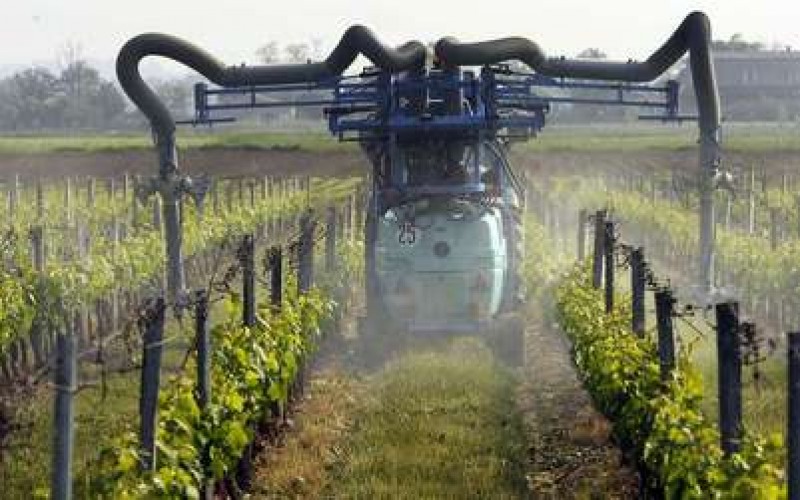
Eva pour la vie regularly intervenes with the French government and parliamentarians. Our requests relate to the funding of research on childhood cancer, support for families, prevention ... Eva pour la vie is behind several bills and amendments on these issues. But progress remains to be made.
- Research funding
The creation of a public research fund dedicated to childhood cancer, leukemia and incurable diseases, guaranteed by law. An additional fund of 15 to 20 million euros / year, allocated to research on childhood cancer, as well as an equivalent amount on other rare incurable childhood diseases would make it possible to finance projects on which needs are critical. First step forward: in 2018, the government (Ministry of Research) allocated 5 million euros per year for this research. But this insufficient sum only makes it possible to support too few projects.
- Help for families of sick children
We propose a law establishing a status of "protected parent" for parents whose child is diagnosed with a serious illness. Objectives: to provide specific protections in terms of employment, housing (rent, credit) and tax administration. The amounts of aid granted to families of sick children should be greater, and based on the actual duration of the child's illness. In 2021, we obtained the doubling of the duration of the AJPP (daily parental presence allowance), increased from 310 days to 620 days. A mission also demonstrated the need to provide assistance to families of sick children more simply, more quickly.
- Help for families of deceased children
We asked for the establishment of an automatic death benefit that would be paid to the parents in the event of a child death (3400 euros), as well as various protective measures for families having lost a child. In 2020, a law aimed at better supporting these families was passed unanimously, taking up several of our requests: death capital (2000 euros), maintenance of social assistance, protection against dismissal, psychological support ... https://www.legifrance.gouv.fr/jorf/id/JORFTEXT000041975976
- Reception conditions for hospitalized children
Set up regular independent audits in pediatric departments, in particular pediatric oncology, with the collaboration of associations and families of patients (systematic questionnaires actually used). These audits would make it possible both to help the nursing teams and to improve reception conditions (medical, food, etc.) and treatment of children.
- Bone marrow, platelets, blood donation
The Ministry of Research and Higher Education could participate in improving the policy of information and incentive to donate blood, platelets and bone marrow - by including these concepts in school learning, primary up to high school or even higher education. Hours of health-related lessons could be provided by teachers, specialized associations and health professionals. Similar actions can be envisaged within French companies, with facilities adapted to volunteers.
Estimated Additional Expenses (/year)
- Public research fund for pediatric diseases: 15 - 20 million euros
- Research fund for rare incurable pediatric diseases: 15 - 20 million euros
- Creation of a protected parent status : 20 million euros
- AJPP revalued to the level of the minimum wage: 8 - 14 million euros
TOTAL: from 58 to 74 million euros
Possible sources of funding (/year)
The association is not intended to ask the State to use one budgetary lever rather than another. However, the following figures - given by way of example - show that it is possible to provide the missing funding without jeopardizing the French economy ...
- Tobacco: 2 cents / packet sold = 54 million euros
- Tax of 0.05% on the turnover of drug manufacturers = 27 million euros
- Tax on the turnover of phytosanitary product producers: 10 million euros
- Set up public research funding dedicated to pediatric cancer & leukemia , in the amount of 20 million euros, guaranteed by law. An equivalent amount would also be allocated to other incurable childhood illnesses. Several possible funding methods have been identified.
- Facilitate the individualization of treatments , in particular in the case of diseases where there is no curative therapy. Collaboration with international colleagues whose medical approach could bring results must be facilitated.
- Improve the quality of reception & treatment of children in hospitals . The establishment of regular independent audits in pediatric departments, with the collaboration of associations and above all, of the families of patients would make it possible to provide assistance to staff and patients, and to prevent possible abuses.
- Reform the daily parental presence allowance for parents of seriously ill children , in order to increase it to the level of the minimum wage or to 80% of the salary. In addition, we are asking for the extension of the death benefit for those under 18 (this measure already exists for the beneficiaries of deceased employees, unemployed etc ..., up to € 3,400 paid by the CPAM)
Family of Yanelle, 5 years old
When our daughter's diagnosis was announced, and unable to accept that such a terrible disease could affect a 5-year-old girl, I turned to the internet, hoping to find comfort, and came across the site of Eva pour la vie. Their story touched me so much… I felt exactly the same pain. I then decided to write to them. Stéphane, whom I particularly welcome, quickly answered me and directed me to the best specialists in order to have another opinion. At the same time, Eva pour la vie provided me with financial assistance to support Y.'s treatment (Rapamune, 2mg). In full confinement, the association allowed us to benefit from free accommodation near the hospital where our daughter was being cared for, because the parents' houses were closed. What Eva pour la vie did is just enormous because thanks to them, other children and patients with other pathologies were able to be accommodated during this difficult period of covid19 and thus continue their care. A big thank you to this association of great values which does a lot to help pediatric cancer research and which also helps to soften, help and support all families in distress.
Family of Mathys, 8 years old
Following the announcement of the disease of our little warrior (neuroblastoma) we had to stop working to ensure hospitalizations and all that goes with it. As a result, over time financial problems arose and we were no longer able to cope with the invoices (Edf, taxes, etc.). It was then that we appealed to the Eva pour la Vie association, while our bank was not supporting us in this ordeal. Thanks to the association, we were able to pay our bills, bring our account up to date and negotiate together with the bank, which then agreed to reimburse part of the fees it took from us every month. Thanks to Eva pour la vie our life has changed a lot. We can devote ourselves to our warrior and the financial problems are behind us.
Family of Laura, 14 years old
Laura fell ill three and a half years ago, and relapsed from leukemia in March 2020. She was treated in several hospitals and had a transplant. She is still hospitalized. The association has helped us greatly. Fortunately, it exists, it is essential. We received wise and relevant advice, significant financial assistance, contacts with other organizations […]. The association also gives us moral support, and we know that we can count on it in case of problems or various questions. The association found us accommodation near the hospital, following the problems encountered with the parents' house (an organization which normally has to house the parents of sick children).
Resistance to treatment is a major clinical problem, in particular in the case of osteosarcomas, bone tumors affecting children or adolescents. Indeed, chemotherapy, associated with surgery, is the central pillar of current treatment. However, many osteosarcomas are or become resistant to these antiproliferative drugs. Recurrences and / or the appearance of metastases are then frequent. 2 out of 5 patients cannot be cured! Osteosarcoma is therefore a pediatric cancer with a poor prognosis for which it is absolutely necessary to identify ways to counteract resistance to treatment in order to improve the chances of recovery for patients.
Dr Olivia Fromigue's team has identified the MT2A protein, the presence of which is essential for osteosarcoma cells to survive in the face of chemotherapy. Analysis of tumor samples taken before the start of chemotherapy revealed that if the tumors express little MT2A, patients will respond well to treatment, whereas if the MT2A level is already high, patients will be poor responders with a reduced survival rate. Thus, their work suggests that MT2A would be a predictive marker of resistance to chemotherapy which can be used from diagnosis.
The next question was to consider using MT2A as a therapeutic target. They have just provided proof of concept that blocking the expression of MT2A significantly improves the effect of chemotherapy in vitro and in animals. Before considering a clinical development of this discovery, it is necessary to fully characterize the roles of MT2A in the whole tumor and not only in the tumor cell. Their current project, financially supported by Eva pour la vie (through a grant of 21,000 euros, paid in early 2020), aims to study the role of MT2A in communication between tumor cells and the body's defense cells. Indeed, the team suspects her of participating in the tolerance of tumors by the immune system ...
Interview with Dr Olivia Fromigue
Why did you decide to do research on childhood cancer?
Research on childhood and adolescent cancers is essential, alongside adults because the biology is very different. And certainly more so for growing bone tissue. I had already noted and studied it during my thesis: the functioning and the activity of a formative bone cell are different in the fetus, the child, the adult and the elderly. The response of tumor cells to treatments defined for adults is also different. It is essential to better understand, to characterize in detail the tumors of the child in order to propose perfectly adapted therapeutic solutions. Our work aims to understand how tumor cells cope with anticancer drugs - mainly chemotherapy - and why some tumors are not sensitive to them and resist treatment.
Why are you interested in osteosarcoma?
During my thesis, I studied the mechanism of bone formation in adults and children. Then I went on a post-doctoral position at the tumor center of the Université Libre de Bruxelles, in a team working on metastatic breast cancer and which wanted to set up a research project on the interactions between mammary tumor cells and bone cells. . I was then their referent for normal bone tissue and I learned a lot about the deregulations and dysfunctions that exist in tumor cells. Then, I did a second post-doctorate in Nice on the theme of communication between tumor cells and normal cells (in the lung cancer model) while training myself in a technique then in full swing: DNA chips. It is clear that the different cells communicate a lot. Normal cells receive signals from tumor cells and will adapt their behavior unfortunately very often to “serve” and “benefit” from the development of the tumor. Back in the Paris region, I focused my projects on bone cancer, especially since at the time little research was carried out on this rare cancer. I then had the chance to join the Gustave Roussy Institute and to interact with other researchers and especially clinicians aware of bone tumors, and therefore to be as close as possible to clinical reality.
Could this project lead to cross-cutting advances, that is to say beyond osteosarcoma, for children?
Yes, our work is carried out in the osteosarcoma model, but the MT2A protein can be produced by any normal cell in the body which has to face chemical or toxic aggression. The same may be true for tumor cells. The link between the level of expression of MT2A by the tumor and the prognosis has moreover been described in the literature in cases of breast, stomach and prostate cancer, etc. On the other hand, there is no data. was still available as to the role of MT2A in pediatric cancer.
Why is funding from Eva for Life, and associations, important to you?
While funding from major national (or even international) programs is very rigid, ad hoc support from associations is decisive for initiating research projects, providing the preliminary results that are essential to convince major funders. This also makes it possible to quickly reorient the work towards promising lines of research.
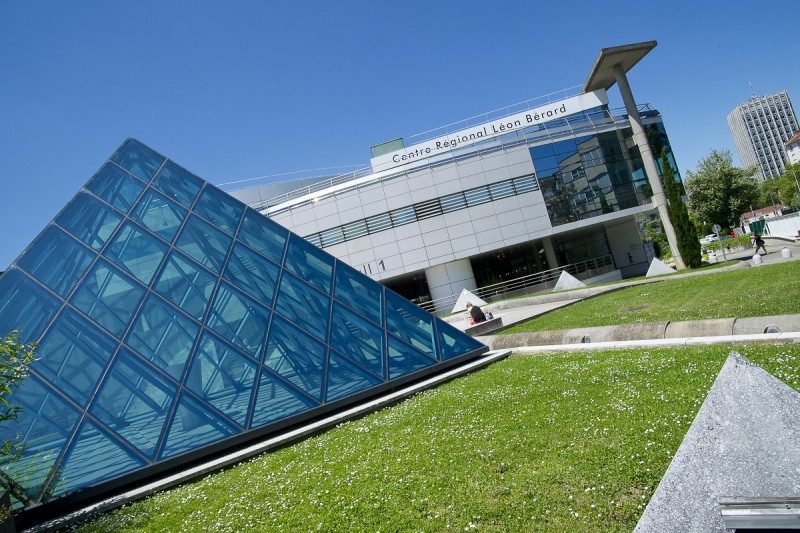
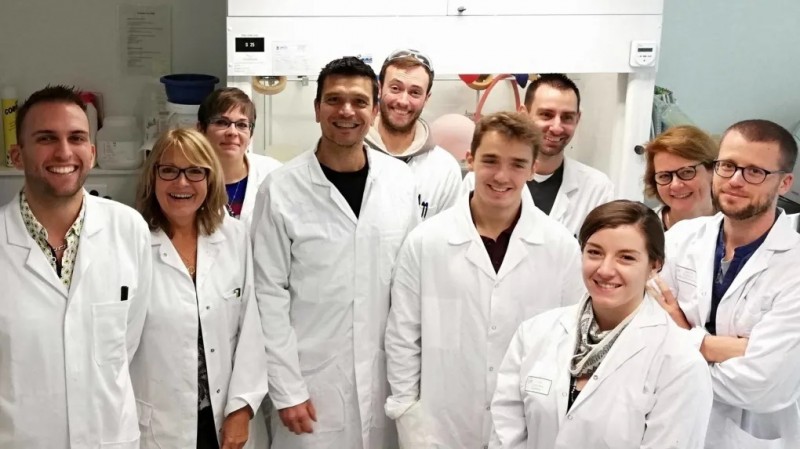
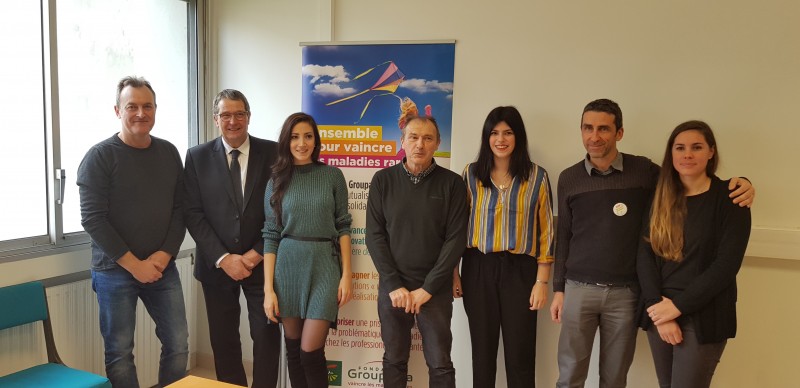
For more than 20 years, this teacher-researcher has been working on cancer. And it's been almost 10 years since he went to kidney cancer or renal cell carcinoma. By joining the team of Dr Christophe Grosset (Inserm, MiRCaDe team), he wanted to use his experience and take a new step forward by working on childhood cancer. He is the initiator of an ambitious project, which involves several surgeons, doctors and international researchers, on the study of nephroblastoma (or Wilms tumor) in children, co-funded by the association Eva pour la vie and Aidons Marina ...
Dr Patrick Auguste you are in charge of the study of Wilms tumor in the MiRCaDe team led by Dr Christophe Grosset. Can you tell us more about the project and the motivations that led you to work on childhood cancer?
For more than 20 years I have been working on cancer, more specifically in adults. And it's been almost 10 years since I went to kidney cancer or renal cell carcinoma. By joining the team of Dr Christophe Grosset (Inserm unit 1035, MiRCaDe team), I wanted to climb a new level in my career and work on childhood cancer without however moving away from what I knew, it is ie renal carcinoma. I remain convinced that the treatments for cancer in children must be completely different from those in adults. For that we must find new targets for these treatments, and we must therefore understand how childhood cancers and in particular, in my case, how nephroblastoma or Wilms tumor develops.
Wilms tumor is the main kidney tumor in children. It develops from the developing kidney and affects 1 in 100,000 children, which represents 100 cases per year in France. It is generally well cared for but in a little less than 10% of cases it results in the death of the patient mainly because of metastases. 10% of patients, it doesn't seem like much, but it's still too much for young children. In addition, chemotherapy and, possibly, radiotherapy are heavy for a young child and can be disabling afterwards.
The aim of the project is to characterize other therapeutic targets in high-risk Wilms tumors, ie tumors that can lead to the death of the child. For this we will identify the proteins that are specifically present in high risk tumors and which are absent in lower risk tumors. These proteins, present only in high-risk tumors, could subsequently be studied and targeted in new therapies.
Did you encounter any technical difficulties in launching this project?
The main difficulties lie in the study of future target proteins. For this, it is absolutely necessary to start studying them in the laboratory on Wilms tumor cells. However, there is only one commercially accessible cell line. This very certainly reflects a great difficulty in obtaining cells in culture from tumors. It is therefore proposed to obtain new cell lines from tumors. For this a technique recently used with success for obtaining a new Wilms tumor line will be used. So our project will also be used to obtain cell models which will then be accessible to the scientific community.
The characterization of the proteins specifically expressed in high-risk Wilms tumors will be carried out by a new technology developed at the University of Bordeaux by Dr Anne-Aurélie Raymond and Fréderic Saltel. Wilms tumors, like many pediatric cancers, are rare tumors and very often laboratories only have blocks of tumors that have been firmly fixed for the pathologist to make a diagnosis. The problem with binding is that it modifies the proteins and that it is subsequently impossible to characterize them. In this new technique, changes in proteins due to binding are reversed and it is subsequently easy to identify the proteins by a method called mass spectrometry. Once these proteins are identified, with the help of cultured cells, we can study the role of these proteins in high risk Wilms tumors. The aim, of course, is then to be able to inhibit the activity of these proteins in order to be able to kill the cells and therefore destroy the tumor.
Can you introduce us to the team that will work with you on the project?
I am part of an Inserm unit in Bordeaux (U1035), headed by Dr Alain Taïeb, who works on cancer mainly in adults. This unit is divided into several teams, including the MiRCaDe team to which I belong. This team, led by Dr Christophe Grosset, works mainly on pediatric cancers and more particularly on hepatoblastoma, infiltrating glioma of the brainstem and, now, Wilms tumor. The Wilms tumor project is international and will bring together people with different and complementary specialties. It will bring together, in addition to myself, a doctoral student from the University of Bordeaux and the team that developed the technique for identifying proteins. It will also be done in collaboration with a team of doctors in Seville (Spain), more particularly by Drs de Alava and Ramirez-Villar. Dr de Alava is the pathologist who monitors all kidney cancer diagnoses in Spain and Dr Ramirez-Villar is a member of the European Committee for Childhood Kidney Cancer (SIOP RTSG), a committee that defines the treatment of all pediatric cancers of the kidney. They are the ones who will provide the tumor blocks, the cells to be cultured and who will participate in the characterization of the role of the proteins characterized in high-risk tumors.
Did you encounter any financial or administrative difficulties in launching this project? What will Eva's financial support for life allow you to do?
In all projects, including this one, the hardest part is finding the money to start. The risks are higher when starting a project compared to an already established project. But it is also the risks that lead to new discoveries. The funding provided by Eva for Life will allow us to finance the characterization of proteins in high risk tumors. It is therefore highly crucial and will allow us to characterize proteins that can serve as therapeutic targets in order to treat high-risk Wilms tumors.
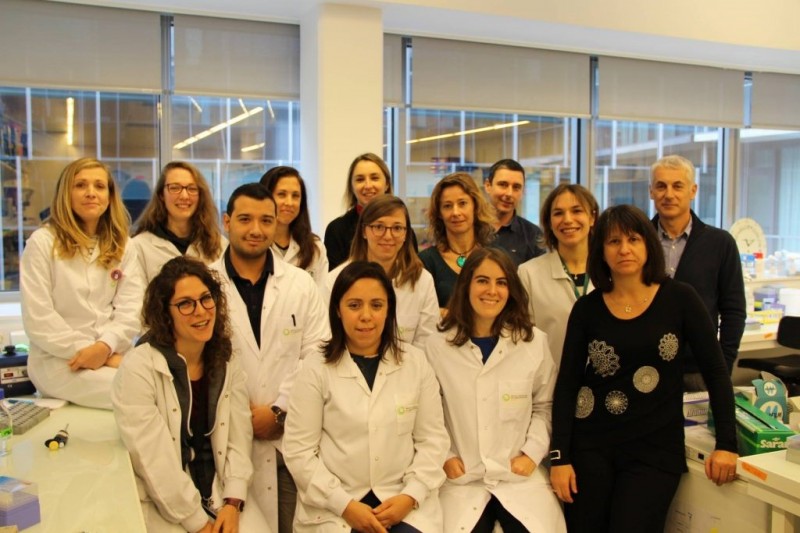
Dr Fabienne Meggetto, you are research director at INSERM Toulouse. You have decided to focus your research on lymphomas in children. Can you tell us more about this project, and your motivations for working on childhood cancer?
Lymphoma is cancer that affects cells of the immune system, i.e. lymphocytes. Lymphocytes are white blood cells that help the body fight infections. They are made in the bone marrow, spleen, and lymph nodes, and then travel through blood and lymph vessels. Their mission is to identify and fight infections and abnormal cells. There are two main types of lymphocytes: B lymphocytes and T lymphocytes. Lymphoma occurs when abnormal / mutated B or T lymphocytes have grown out of control. The abnormal lymphocytes multiply in abnormal ways and as they accumulate, they eventually form tumors, especially in the lymph nodes. But as lymphocytes circulate throughout the body, they can affect many other organs as well. Lymphoma falls into two broad categories: Hodgkin lymphoma and non-Hodgkin lymphoma. In children under 15, the most common type of lymphoma is "non-Hodgkin's". These are the 3 rd cause of cancer in children after leukemia and brain tumors.
Anaplastic large cell lymphomas are aggressive non-Hodgkin lymphomas that affect T lymphocytes. Anaplastic large cell lymphomas, although rare, represent 15% of non-Hodgkin lymphomas in children and young adults, which makes them lymphomas. most common pediatric patients. In children, 90% of anaplastic large cell lymphomas are associated with a chromosomal translocation which results in the expression of an abnormal protein, NPM-ALK. Although NPM-ALK (+) anaplastic large cell lymphomas are relatively sensitive to chemotherapy, about 30% of young patients relapse early and these relapses have poor prognosis. The search for biomarkers of early relapses is therefore essential for this pediatric cancer.
MicroRNAs are part of the family of molecules called non-coding RNA. They form one of the major pathways for regulating gene expression. Our group is one of the first to have demonstrated in anaplastic large cell lymphomas NPM-ALK (+), microRNAs as tissue biomarkers of resistance to treatment. MicroRNAs are found in tumor cells and can be secreted into circulating body fluids such as blood. However, it has been reported that only 10% of known human microRNAs can be detected in plasma and around 30% of these are poorly represented forms. Our project is interested in other non-coding RNAs, circular RNAs, which are abundant, stable, very resistant molecules and which have been validated as serum biomarkers in solid tumors. Our main objective is therefore to identify serum circRNAs associated with failure / resistance to treatment of anaplastic large cell NPM-ALK (+) lymphomas in children.
What is the current therapeutic situation, and what are your hopes?
The standard treatment for pediatric anaplastic large cell lymphoma is a combination chemotherapy different from that used to treat anaplastic large cell lymphoma in adults. Although NPM-ALK (+) anaplastic large cell lymphomas are relatively sensitive to chemotherapy with high response rates, event-free survival is still between 65 and 75% in children. Thus about 30% of young patients relapses early and these relapses are always poor prognosis. Different targeted therapies, that is to say therapies directed specifically against tumor cells have already been tested for the management of chemo-resistant forms of anaplastic large cell lymphomas NPM-ALK (+) in children, such as therapy by antibodies, anti-ALK inhibitors, the leader being crizotinib, and more recently immunotherapy. These drugs are developed to block the growth or spread of tumor cells by acting on particular alterations that cause the development or spread of tumor cells. This so-called “targeted” action makes it possible to act more specifically on tumor cells and thus limit the damage suffered by normal cells. However, due to adverse reactions associated with treatment with certain antibodies, cases of sudden relapses following discontinuation of crizotinib, and no continued clinical remission after discontinuation of Crizotinib in other cases, clinicians are at an impasse therapeutic if a bone marrow transplant is not possible. The search for biomarkers of early relapses is therefore essential.
Do you plan to develop this project with other researchers - including internationally - and extend it to other types of pediatric cancers?
Prof. Laurence Lamant, referring pathologist for anaplastic large cell lymphomas (pathology department, Toulouse University Hospital, IUCT-Oncopole) and member of my group is historically involved in the morphological, genetic and molecular characterization of anaplastic large cell lymphomas. . She is a member of an interdisciplinary working group within the lymphoma committee of the French Society for Cancer in Children and Adolescents (SFCE). At the same time, we have long had collaborations with European and international cooperative groups active in childhood lymphoma. It also encourages interactions with the Adult Lymphoma Cooperative Group (Adult LYSA). Very soon a German pediatric neuro-oncopediatrician will join my group for two years. He will be 100% involved in the project and through his training we plan to extend our project to other pediatric cancers, in particular neuroblastoma . In fact, a mutation of the ALK gene has been described in approximately 12% of cases of neuroblastoma in children, which is the most frequent extracerebral solid malignancy in young children.
Did you encounter any financial or administrative difficulties in launching this project? What will Eva pour la vie's financial support allow you to do?
The financial support that I receive from the Eva pour la vie association is essential for the start of the new research project that I want to develop. Without this support, after several refusals, the project could not see the light of day for lack of funding. The money entrusted to me will allow me to carry out experiments essential to the start of the project and therefore to generate the first data. This step is essential for projecting the project towards a translational study with the clinic.
Eva pour la vie launched a fundraising initiative - now followed by numerous associations - aimed at encouraging the State to create a fund dedicated to research on childhood cancer, as well as to improve support for families. of sick children. With a first victory, undoubtedly insufficient but without precedent: the vote, at the end of 2018, of a new fund of 5 million euros / year for this research. What do you think ?
I “donf” support the motivation of the Eva Pour La Vie association and the Growing Up Without Cancer Federation because the absence of national calls for tenders specific to pediatric cancers is an aberration. Indeed even if certain cancers are observed at the same time in children and adults, they present their own specificities. It is therefore essential to be able to study / compare them in order to better characterize them in their biology and their responses to treatments. This in order to allow a better diagnosis, prognosis and to broaden the therapeutic options. But one of the engines of medical research remains the financial profits for the private industry often also involved in the financing of clinical trials. Childhood cancers being rare diseases and therefore a weak economic market, it is therefore somewhat interesting compared to adult cancers (lung cancer, breast, etc.). The state must compensate for this by ensuring the funding of research work without necessarily immediate financial benefits but advances in public health, such as the improvement of the prognosis, diagnosis of the care of patients and their families.
Scientific publication (November 2020)
T cells transformed in the laboratory help to better understand the origin of childhood lymphoma.
https://insb.cnrs.fr/fr/cnrsinfo/des-lymphocytes-t-transformes-en-laboratoire-aident-mieux-comprendre-l origin-dun-lymphome
The Journal of National Cancer Institute published in June 2022 a study conducted in Denmark based on cancer and drug consumption registers. A 20-year follow-up highlights a risk multiplied by 3 of osteosarcomas and by 2 of Hodgkin's and non-Hodgkin's lymphomas in the event of exposure via drugs using DEP phthalate (DiEthyl Phthalate) in gastro-resistant drugs. The risk is statistically significant at the 95% level.
The transposition to the French reality on a purely demographic level (270 cases over 20 years) gives an order of magnitude but should not be taken literally, due to the lack of comparison on the specific consumption of each country.
It seems plausible that contamination of children and adolescents via environmental sources (mainly personal care products) could have played a role.
The scientific literature also clearly highlights the fact that DEP cannot be considered as a neutral excipient. It interacts with other phthalates and even with other families of Endocrine Disruptors, such as perfluorides in the genesis of childhood diseases. It also more specifically impacts osteoblasts.
The results suggest that this phthalate should be eliminated from consumer products and in priority from medicines. The recent roadmap of the European Commission on chemical products has provided for the elimination of major families of endocrine disruptors such as phthalates.
References :
Sarah Bachir "Childhood cancers, phthalates and drugs" Internship dissertation for the 5th year of Pharmacy Industry and Research - Toxicology specialty. Faculty of Pharmacy of Paris.
Thomas P Ahern, Logan G Spector, Per Damkier, Buket Öztürk Esen, Sinna P Ulrichsen, Katrine Eriksen, Timothy L Lash, Henrik Toft Sørensen, Deirdre P Cronin-Fenton. Medication-Associated Phthalate Exposure and Childhood Cancer Incidence J Natl Cancer Inst. 2022 Jun 13;114(6):885-894. doi: 10.1093/jnci/djac045
Sarah Bachir's internship carried out at the Health Environment Network from April to August 2022. Internship supervisor André Cicolella.
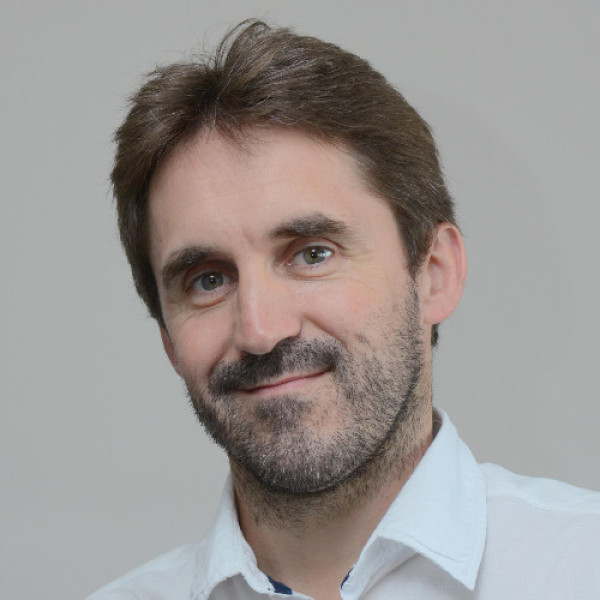
You have decided to focus your research on childhood cancers. Can you tell us more about your motivations for working on childhood cancers?
I chose to focus my research on childhood cancers largely because of personal experience. During a conversation with my son about his friend's illness, I was intrigued by his childhood questions about cancers. He asked me if I worked on cancers, and I answered in the affirmative, explaining that I was looking for new treatments to cure them. However, he then asked me why I did not work specifically on childhood cancers.
It was at this precise moment that my son told me that one of his friends, Imene, had cancer, and that he hoped that I could work on this type of cancer to save her. This conversation deeply touched my heart and prompted me to make the decision to focus on pediatric cancer research. By a happy coincidence, at the same time, I had also made the decision to share my laboratory with the team of Dr. Birgit Geoerger, a pediatrician at Gustave Roussy.
Furthermore, after discussions with pediatric researchers at Gustave Roussy and the Curie Institute, it became clear that there was a pressing need to develop new treatments for pediatric cancers. This convergence of personal and professional elements strengthened my determination to dedicate my efforts to research on childhood cancers and to contribute to improving the prospects of cure for these young patients.
More specifically, can you tell us more about your project supported by Eva for Life? What types of cancers does it focus on? What are your hopes in terms of therapy?
Our project, supported by Eva for Life, focuses on the identification of new immunomodulatory molecules. These molecules are capable of inducing specific immune responses against cancer cells. In other words, we are working on substances that have the ability to stimulate cancer cells to produce antigenic peptides. These peptides can then be specifically recognized by the lymphocyte cells of the immune system, which leads to their multiplication and their ability to destroy cancer cells.
Our research project focuses on several types of pediatric cancers, including neuroblastoma, osteosarcoma and glioblastoma. These cancers are particularly serious and require innovative therapeutic approaches.
We started our project about a year ago, and we have already obtained promising preliminary results with some of our immunomodulatory molecules. Our ultimate goal is to protect these molecules through patents specific to pediatric cancers, which could open the way to new treatment options for children with these types of cancer.
Our therapeutic hopes are to develop more effective and targeted treatments for these serious pediatric cancers, by exploiting the potential of the immune system to fight cancer cells. We aspire to improve the prospects for cure and the quality of life of children affected by these devastating diseases.
Do you plan to develop this project with other researchers – including on an international scale – and extend it to other types of pediatric cancers?
We are currently in discussions with the RECAMO Institute in Brno, Czech Republic, to evaluate the effect of our immunomodulatory molecules on glioblastoma. This project aims to use our molecules on glioblastoma organoids and analyze their immunomodulatory effect on this specific tumor type. Glioblastoma organoids are tumor models that are able to faithfully reproduce the genetic, histological and morphological characteristics of each tumor.
This collaboration with the RECAMO Institute demonstrates our willingness to develop our project in partnership with other researchers, including on an international scale. We are open to the idea of extending our research to other types of pediatric cancers or to other research partnerships to contribute to the fight against childhood cancer.
Did you encounter any difficulties, financial or administrative, in launching this project? What does the financial support from Eva pour la vie allow you to do?
We did not encounter any major difficulties in launching our project, largely thanks to a close collaboration with Professor Birgit Geoerger, a pediatric researcher at Gustave Roussy. In addition, we received funding from INCa six months before receiving financial support from Eva pour la vie. This initial funding from INCa allowed us to hire a research engineer, which was a crucial step in setting up our project.
However, the financial support from Eva pour la vie has had a significant impact on our activities. Thanks to these funds, we have been able to undertake the selection of potentially immunomodulatory molecules for the treatment of pediatric cancers among our various molecules. In addition, we have started to conduct in vivo studies on mouse models of pediatric cancer, which represents an important step in our research aimed at developing new therapies.
Beyond the call for public generosity, Eva pour la vie has been driving forward an unprecedented approach in Europe since 2012 – now shared by many associations through the Grandir Sans Cancer federation – asking the State to create a fund dedicated to research into childhood cancers, as well as to improve aid for families of sick children. With Grandir Sans Cancer, she obtained the vote at the end of 2018 for an annual fund dedicated to this research of 5 million euros/year, and at the end of 2021, an additional 20 million euros. What do you think of this mobilization?
I think that the mobilization of Eva pour la vie and the Grandir Sans Cancer federation for research on childhood cancers is extremely commendable and important. The fight against childhood cancer is a crucial public health issue, and it is essential to mobilize resources to support research and improve support for families of sick children.
The creation of a fund dedicated to research into childhood cancers shows an awareness of the importance of this cause. Obtaining substantial funding is a significant step forward. These financial resources have already made it possible and will make it possible to finance fundamental research necessary to better understand pediatric cancers, develop new therapies and improve survival rates.
Additionally, improving support for families of sick children is equally crucial. Coping with a childhood cancer diagnosis is an extremely difficult ordeal for families, and they need emotional, financial and logistical support to get through this difficult time. Mobilizing support for these families is an important aspect of the fight against childhood cancer.
I therefore think that the mobilization of Eva pour la vie and the Grandir Sans Cancer federation is admirable, necessary, and the funds allocated to research and assistance to families are an important step towards better care for children with cancer in France and in Europe.
Scientific publications: find out more
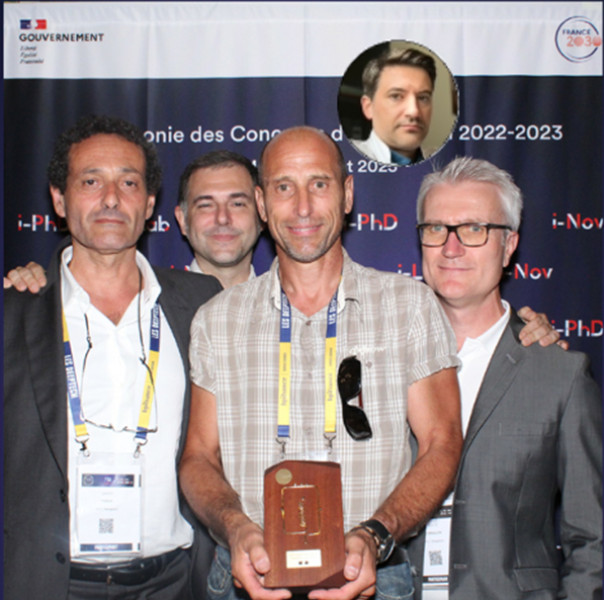
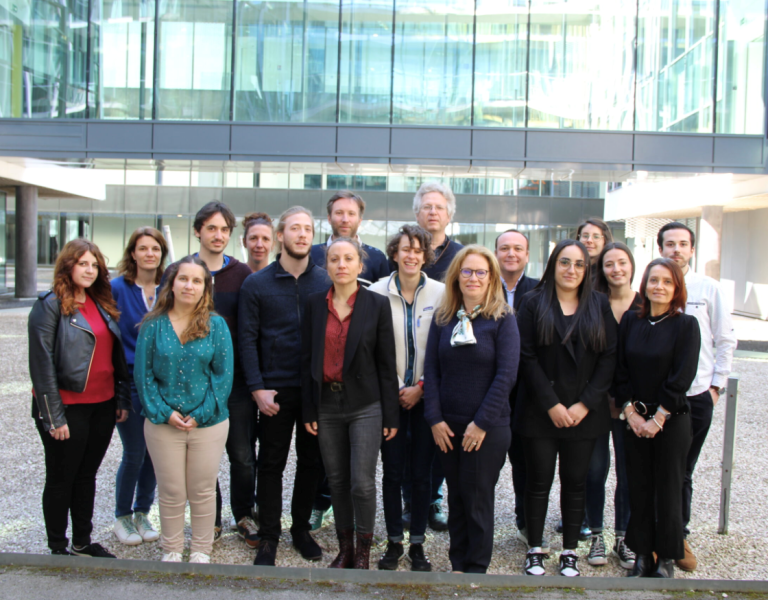
Eva pour la vie supports the Adapted Physical Activity project for children treated for Cancer and Insulin Sensitivity APACIS, led by Professor Marlène Pasquet, pediatric onco-hemato-immunologist at the children's hospital of the Toulouse University Hospital and Justine Thomas, APA teacher and doctoral student, as well as the recruitment of an APA position within this department.
Advances in treatment and supportive care have improved the five-year survival rate of children with cancer. However, childhood cancer treatment is often toxic in the medium and long term. As a result, children who have overcome cancer are at high risk of developing chronic diseases in adulthood, mainly heart and metabolic diseases.
In children fighting cancer, adapted physical activity (APA) has been shown to have positive effects during and after treatment: it improves general health, heart activity, muscle strength, quality of life and reduces fatigue. However, the consequences of practicing physical activity from the time of diagnosis have not been addressed in the studies published on this subject, particularly in terms of metabolic tolerance of prolonged chemotherapy and corticosteroid therapy. In addition, no study has looked at the effects on the risks of cardiac or metabolic diseases in the long term. In healthy children, APA is known to improve metabolic parameters and reduce the risks of chronic metabolic diseases.
This project aims to determine whether, as in healthy children, the benefits of physical activity on metabolic health apply to children treated for cancer, right from the time of diagnosis. Interview with Professor Marlène PASQUET and Justine Thomas
Justine Thomas (JT) and Pr Marlène Pasquet (MP), can you introduce yourselves?
JT: I am a teacher in Adapted Physical Activity and a PhD student in science. My daily life at the CHU is divided between sessions of physical activities adapted to patients treated in the hematology-oncology department as well as activities related to the APACIS research protocol (monitoring, evaluation, data analysis, conferences, communication).
MP: Professor in Pediatric Hematology Oncology for over 15 years now in the HIOP department in Toulouse. In the department, I deal more specifically with children with blood diseases, patients with benign hematological diseases and children with immune deficiencies. As a teacher, I train 5th year students and interns, and I lead the group dedicated to GATA2 diseases within team 16 of the CRCT (IUCT-O, INSERM U1037). I have been supervising Me Thomas Justine since her Master 2 and now her science thesis in this project.
You are the originator of the project “Adapted physical activity in children treated for cancer and insulin sensitivity”. Can you explain to us the main reasons that prompted you to write this project? Who is it aimed at and how will it be carried out?
JT: The APACIS protocol comes from a recent observation: we are treating pediatric cancers better and better, but we lack the elements to support the long-term post-cancer, in particular the metabolic after-effects of treatments, which can give rise to diseases once adulthood is reached. We know that physical activity is a means of preventing these diseases in healthy adults and children, but no work has focused on this effect in children treated for cancer. It is this combination between the effect of sport and metabolic risk that motivated our work.
The APACIS study is aimed at all children aged between 5 and 18 years old, treated for any cancer at the Toulouse University Hospital. It consists of practicing physical activities in a supervised manner for 6 months, in hospital or at home, then being followed for 2 years. Metabolic assessments are carried out from blood samples, as well as assessments of physical health and nutrition, to ensure a comprehensive approach.
What are the prospects and your hopes for the outcome of this project?
JT: We are working on the possible extension of this study to other hospital centers. The preliminary results are encouraging with effects on metabolic toxicity and tolerance of the side effects of treatments. We hope that this study will provide the first elements on the effect of physical exercise on metabolic factors in pediatric cancers and that it will encourage other researchers to take an interest in the benefits of adapted physical activity in this population.
MP: the first results are in line with our clinical observation: beyond the well-being and the obvious psychological contribution of APA, tolerance to treatment seems better since the early introduction of adapted physical activity. Demonstrating this scientifically is a real challenge that we are taking up, through in-depth metabolomic analyses and analyses of the salivary, periodontal and fecal microbiota.
Beyond the call for public generosity, Eva pour la vie has been driving forward an unprecedented approach in Europe since 2012 – now shared by many associations through the Grandir Sans Cancer Dedération – asking the State to create a fund dedicated to research into childhood cancers, as well as to improve assistance to families of sick children. With Grandir Sans Cancer, she obtained the vote at the end of 2018 for an annual dedicated fund of €5M/year for this research, and at the end of 2021, a one-off addition of an additional €20M to promote the structuring of teams. She is currently mobilizing parliamentarians so that this fund is increased to €25M/year in order to include pediatric oncology clinical research. Finally, she hopes that the necessary APA positions will be systematically financed by the Ministry of Health for all pediatric oncology services. What do you think of this mobilization?
JT: I salute and thank Eva for her unwavering commitment to life in general, to research in pediatric cancerology and to the APA. Our profession is essential in such a service but still fragile or precarious, Eva's commitment to life as well as that of the Grandir Sans Cancer federation has allowed us to recruit a second APA teacher; beyond that, I think that associative commitment is a real asset to convince the ministry of the importance of our function.
MP: This mobilization is courageous, essential and crucial. The funding of these positions is absolutely not sustainable in any of the university hospitals in France and many scientific studies have shown the benefit of APA on the quality of life and the improvement of post-treatment conditions. Our study aims to provide additional scientific elements to this benefit in terms of tolerance, thanks to an early introduction. Studies are beginning to demonstrate the benefit of APA on the muscular system, immunity and cognition of children with Cancer. Funding these positions at an institutional level is a priority and we are very enthusiastic about this support provided by Eva pour la vie and the Grandir sans Cancer federation.
At the end of 2024, Eva pour la vie provided the sum of €10,000 to enable - with other associations - the recruitment of an APA (adapted physical activity) position within the pediatric oncology department of the Toulouse University Hospital. It also provided a €20,000 grant for the research project "adapted physical activity in children treated for cancer and insilunosensitivity (APACIS) - ancillary studies"
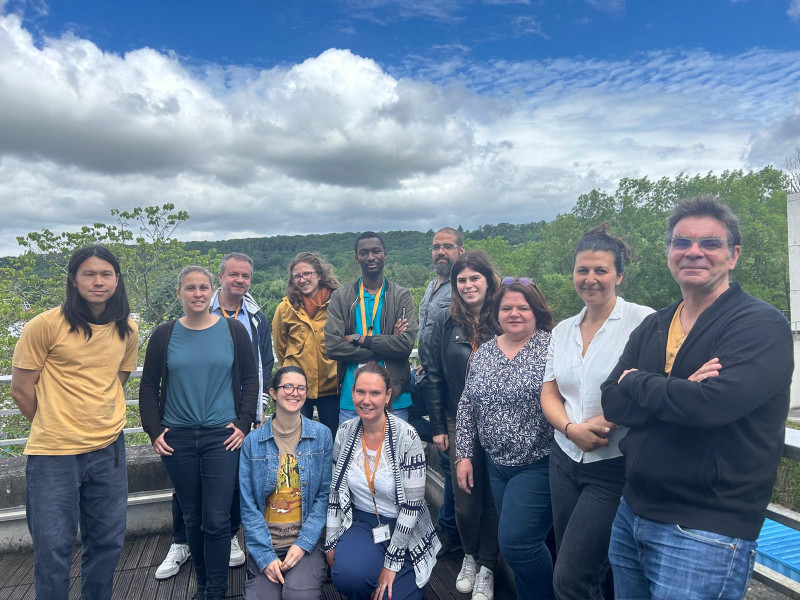
Eva pour la vie & Grandir Sans Cancer have decided to support the work of Dr. Célio POUPONNOT, at the Curie Institute, by funding the Project "Modeling of medulloblastoma using human cerebellar organoids and analysis of the effect of agricultural pollutants" through a grant. This research project includes a crucial environmental research component, the question of understanding in order to try to prevent being as important as the one that aims to better treat children with cancers ...
Dr Celio Pouponnot, can you introduce yourself in a few lines? (your role and activity within the Curie Institute)
I am a research director at the CNRS and lead a research team of 12 to 14 people, on the Orsay site of the Curie Institute which is spread over three sites: Paris, Orsay, Saint-Cloud. Our research activities focus on childhood brain tumors and their treatments, in particular radiotherapy. A significant part of our work concerns medulloblastoma, a pediatric tumor of the cerebellum on which the funded project focuses. Medulloblastoma is mainly pediatric, diagnosed at a median age around 7 years. The 5-year survival is 70-80%. However, this statistic masks the great heterogeneity of these cancers, which presents variable risk groups including low or high risk tumors, the survival rate of the latter being much lower.
You are the originator of the project “Modeling of medulloblastoma using human cerebellar organoids and analysis of the effect of agricultural pollutants”. Can you explain the main reasons that prompted you to write this project? What are its objectives?
The project supported by Grandir sans Cancer and Eva pour la vie is led by B Duvillié, an INSERM researcher in the team. It is structured around two axes, the development of a model to study high-risk medulloblastoma and a second where we use this model to study the effect of pollutants on the early phases of the tumor process, i.e. its initiation.
Study models are key elements in cancer research because they allow us to study different processes. In this project, B. Duvillié develops an in vitro mini-organ model, in culture dishes. By using immature human cells, called induced pluripotent stem cells, we can obtain a 3-dimensional structure that resembles a mini-human cerebellum. By introducing genes altered in medulloblastoma, we are able to model high-risk medulloblastoma. Even if it has its own limitations like any study model, it allows us to study the initial stages of tumorigenesis and the effects of pollutants on these initial stages.
In the first part of the project, we are looking to improve this model by adding cells that form blood vessels to bring it closer to the real organ. In the future, we will add immune cells to better understand their role in tumor initiation, the response to anti-cancer therapies or their impact in the event of exposure to pollutants.
In the second part of the project, we will analyze the impact of certain pollutants (household insecticides, agricultural antifungals) on the early stages of medulloblastoma initiation. The role of pollutants in the onset of childhood cancers is an important societal issue, as we have seen recently, but only partial scientific answers have been provided. As researchers, our role is to advance science on fundamental and clinical research issues but also, when we can, on these societal debates. Our work on pollutants is part of a broader framework. Indeed, various research teams are working on these issues, including the PEDIAC consortium in which we are involved and whose themes focus on the causes and origins of pediatric cancers. This consortium makes it possible to combine epidemiological studies and experimental research. We hope to be able to contribute to providing even partial answers to these important questions about the potential involvement of pollutants in childhood cancers.
What are the prospects and your hopes for the outcome of your research project?
We hope to improve the models for studying medulloblastoma by getting as close as possible to the pathology and share them with the scientific community. These models should allow us to better understand this pediatric pathology, in particular its causes and thus contribute to better treating it. Concerning pollutants, we hope that our research will contribute to clarifying their potential impacts in pediatric cancers. Our experimental study will not provide definitive answers but could provide bundles of indications on the potential of pollutants to modify the cell of origin of these cancers and thus participate in the initiation or acceleration of the cancerous process. It will be essential to complete our study with more complex in vivo models that can provide additional answers. Our study is part of a multidisciplinary field including epidemiology, toxicology (…) which, all together, should contribute to providing answers to these important societal questions.
Generally, parents of children with cancer wonder about the causes of this disease, the incidence of which is not decreasing in France or in Europe. While in 10% of cases, genetic factors are identified, in the vast majority of cases, doctors do not know the causes. Many parents wonder about environmental factors and pollutants, while having a certain feeling of helplessness, because what can be prevented, unlike adults, in children who do not drink alcohol, do not smoke, who eat properly and who exercise? What would you like to say to these parents?
It is important to specify that the 10% of genetic factors in question concern hereditary predispositions or congenital mutations. Nevertheless, frequent genetic alterations are identified in pediatric cancers such as mutations, chromosomal alterations, etc. These so-called "somatic" genetic alterations are clearly involved in the cancerous process, are very frequent and found in almost all adult and pediatric cancers. The scientific challenge lies in understanding the origin of these alterations: are they caused by environmental factors or do they appear randomly? Scientific studies have shown that these genetic alterations are much more frequent in organs undergoing strong proliferation/growth. One of the characteristics of children's organs is precisely this significant growth/proliferation. It is therefore likely that some of these somatic alterations are explained by this phenomenon. At the same time, studies have established, for example, that exposure to ionizing radiation or living near large wine-growing areas increases the risk of pediatric cancers. The environment and exposures must therefore not be neglected, and more research is needed to clarify their role and contribution. This is precisely the aim of our project.
Beyond the call for public generosity, Eva pour la vie has been driving forward an unprecedented approach in Europe since 2012 – now shared by many associations and professionals through the Grandir Sans Cancer federation – aimed at obtaining a fund from the State dedicated to research into childhood cancers, as well as improved assistance for families of sick or deceased children. With Grandir Sans Cancer, she obtained at the end of 2018 from the Ministry of Research an annual fund of €5M/year dedicated to basic research into childhood cancers, and at the end of 2021, a one-off contribution of €20M to promote the structuring of research teams on pediatric cancers. She is also closely linked to several social advances for the families concerned. She is currently mobilizing parliamentarians so that the research fund is increased to €20-25M/year in order to include pediatric oncologic clinical research. She hopes that the mobilization of public authorities will be sustainable, stable and focused, at the same time, on research, care, prevention and social support that meets needs. What do you think of this approach?
In recent years, public support for pediatric cancer research has been strengthened thanks to the mobilization of associations. The funds obtained have made it possible to mobilize new research teams on these themes. Research is becoming increasingly expensive. These funds are therefore crucial to develop ambitious and quality pediatric cancer research in order to understand the causes, the biology of pediatric cancers, but also the impact of exposure to pollutants, the mechanisms of resistance to treatments and their toxicities, etc. The diversity and combination of approaches (clinical, epidemiological, toxicological, fundamental) is necessary to progress in the understanding of these pathologies. It is therefore essential that these initiatives continue and be heard because the funds they have made it possible to release represent essential assistance for the advancement of pediatric cancer research.